For many gardeners, boronias are the ultimate love affair. Boronias include a wide range of flowering species, with brightly coloured and fragrant blooms that transform gardens during the winter.
While some varieties may have gotten a bit of a bad reputation as ‘difficult’ growers, with the right care and plenty of sunshine, you should have happy, thriving plants.
Let’s take a look at these stunning plants, which varieties are best grown in Australia and how to make sure you give your plants the care they need.
More...
What are Boronias?
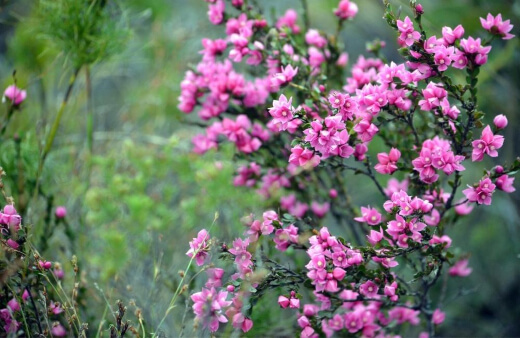
Boronias are an Australian endemic species covering about 160 different species of the Rutaceae family. Even though they fall under a citrus family, these plants are prized for their bright and fragrant blooms – often used in the cut flower trade.
Its abundant blooms and foliage are filled with essential oils, providing a sensory delight not just from their flowers. Crushing the leaves of the boronia reveals these essential oils, although not every variety will be scented with a favourable fragrance.
While these plants aren’t considered to be the easiest of garden plants, with the right attention and detail when planting, you should be able to have a brilliant display in no time.
Unfortunately, boronia plants are often mistaken for their close cousin, Crowea plants. While both boronia and crowea plants stem from the Rutaceae family, they can be easily told apart by the number of petals that they produce. Boronias only have 4 petals, whereas Croweas have 5.
Flowers range in colour from white to brown, from red to blue. For many, the more brightly coloured flowers are favoured, as these are great as a focal element in your garden or as part of a flower arrangement.
Best Boronia Varieties to Grow in Australia

One of the biggest benefits of growing boronias is the wonderful selection of plants that one can choose from. Undoubtedly, some of the more popular varieties like Boronia megastigma or Boronia heterophylla are favoured as they are decidedly easier to grow.
Nonetheless, here are some of our top picks for boronia varieties to grow.
Brown Boronia (Boronia megastigma)
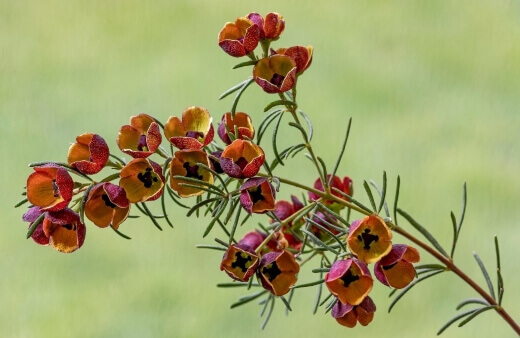
By far the most widely grown species of Boronia, the B. megastigma or brown boronia is a Western Australian native with beautifully perfumed flowers and foliage.
As this plant can be a little tricky, many gardeners recommend growing yours in pots for the best results.
For more tips, follow our Boronia megastigma Growing & Care Guide.


Get Your Free Guide:
Master Growing Australian Natives eBook
A Must Have Complete Guide for Every Australian Garden
Get Your Free Guide:
Master Growing Australian Natives eBook
A Must Have Complete Guide for Every Australian Garden
Red Boronia (Boronia heterophylla)
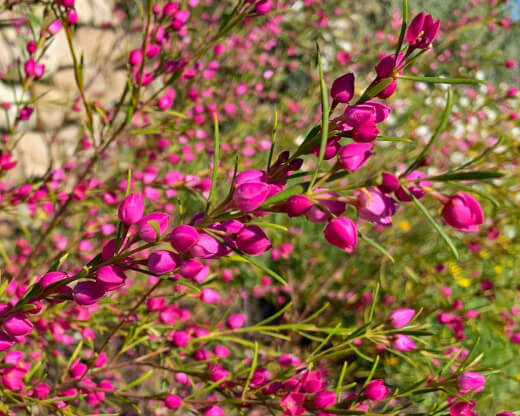
Source: gardensonline.com.au
Another popular choice is the B. heterophylla or red boronia. Unlike the name suggests this southwestern native has gorgeous pink-tinged petals and robust, sweet-scented foliage.
Perfect for those looking for a medium-sized shrub, this is a great choice for a fragrant, feature plant.
Native Rose (Boronia serrulata)
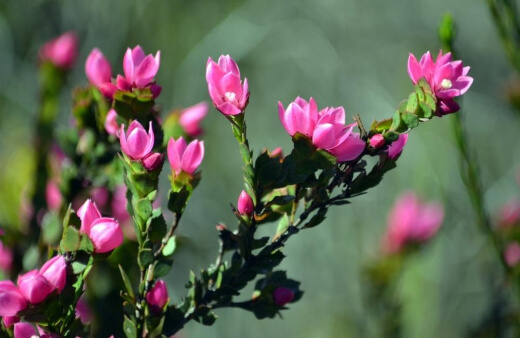
With slighter large flowers, the B. serrulata or native rose is perfect for regions like New South Wales. This species produces gorgeous deep pink flowers with a delicate rose-like fragrance.
Enjoying well-draining soils, this species is great for rockeries and flower gardens.
Aniseed Boronia (Boronia crenulata)

Also known as the aniseed boronia, this is a dense shrub or small tree with highly ornamental flowers. While it will need to be protected in regions that experience a lot of hot sun, it’s perfectly happy to grow in a wide range of soils.
Sydney Boronia (Boronia ledifolia)

A particularly showy Boronia species, B. ledifolia or Sydney boronia is known for its compact growth and extreme production of blooms.
While it needs a semi-shaded or sun-dappled spot to grow, it produces a wealth of flowers throughout the summer and autumn.
Boronia pinnata
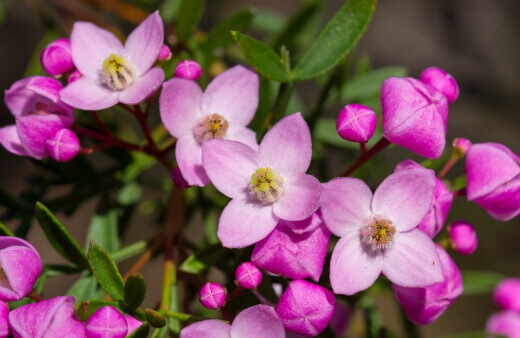
Although not a sweet-smelling plant, this evergreen shrub is prized for its waxy, fragrant foliage.
This species is known to be hardy and enjoys growing in well-draining soils.
Keys Boronia (Boronia keysii)
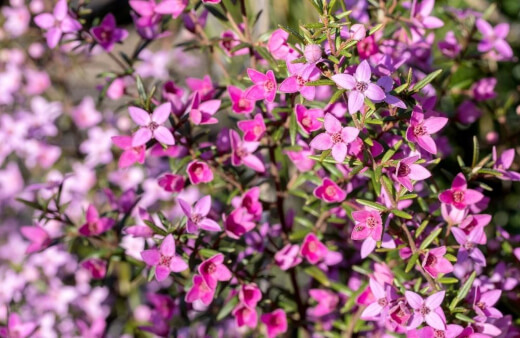
Also called the Keys Boronia, this is a sprawling species of the Boronia. With rose-pink and white flowers and an open branching habit, it makes for a stunning feature plant in gardens.
Mauve Boronia (Boronia denticulata)
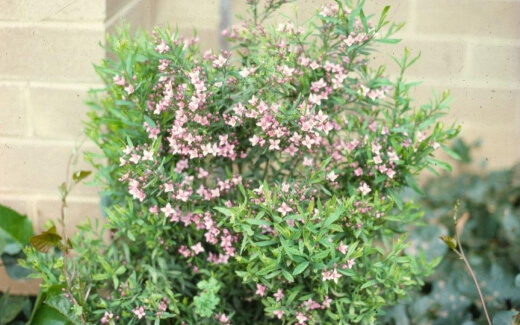
Source: plantselect.com.au
With lime green leaves and pretty pink flowers, this species is great for regions with moist soil and rainy regions. Although it’s a smaller plant, growing less than a metre in height, it does produce masses of flowers.
The Tall Boronia (Boronia molloyae)
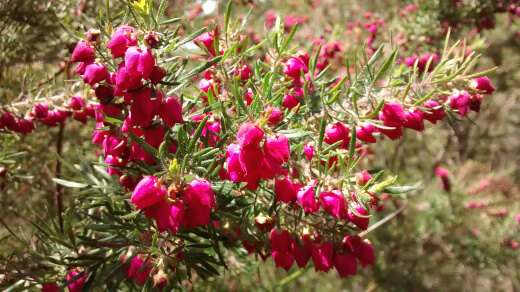
Source: gcln.org.au
The tall boronia is perfect for coastal regions. This species reaches around 3 metres in height in the right conditions and produces aromatic pink-red flowers.
Unfortunately, this species can be a little trickier to establish so the right conditions are essential.
Telopea Valley Star (Boronia ‘Telopea Valley Star’)
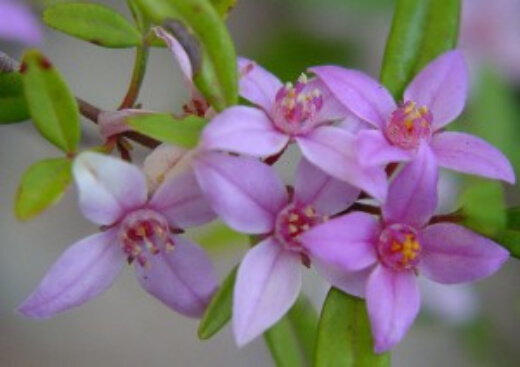
With softer coloured leaves, the Boronia ‘Telopea’ or ‘Telopea Valley Star’ is a smaller, gentler variety. This is a hybrid variety, best suited for areas that experience cooler climates.
The Forest Rose (Boronia rosmarinifolia)

Source: ppnn.org.au
Also called the forest rose, this species produces small, slim dark green leaves and pretty little pink flowers. Although not as popular as some of the other varieties, B. rosmarinifolia offers a gentler bloom when grown in sun-dappled situations.
Bremer Boronia (Boronia clavata)
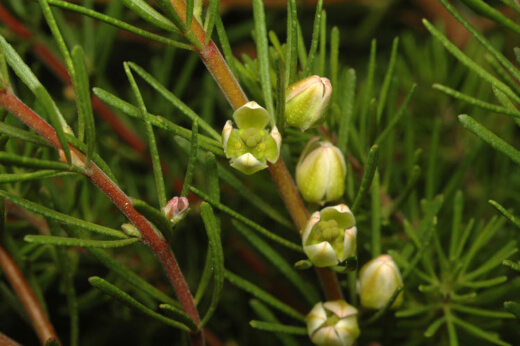
Source: en.wikipedia.org
Turning away from the pink-tinged flowers, the B. clavata or Bremer boronia is perfect if you’re looking for a gloriously green plant with softer yellow notes.
Used to growing near river banks, this graceful plant has an upright growing habit and is known to be more adaptable than most.
Pale Pink Boronia (Boronia floribunda)
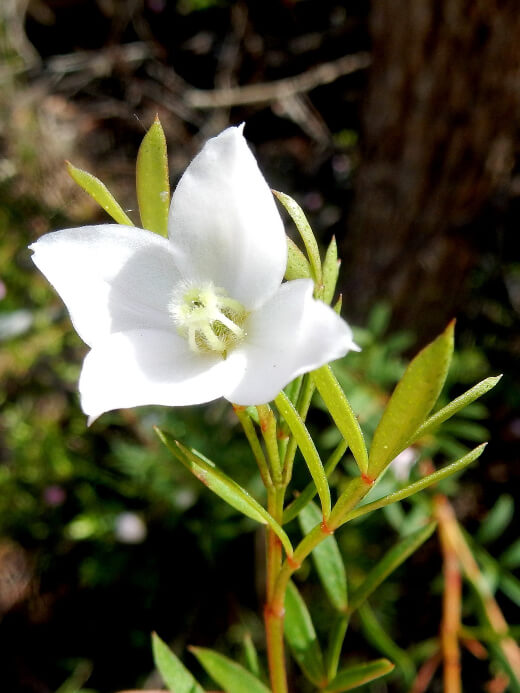
Source: en.wikipedia.org
Called the pale pink boronia, this species is another with softer coloured flowers. Contrasted against its dark foliage, this stunning cultivar is great for coastal regions perfect for coastal gardening.
Fraser’s Boronia (Boronia fraseri)
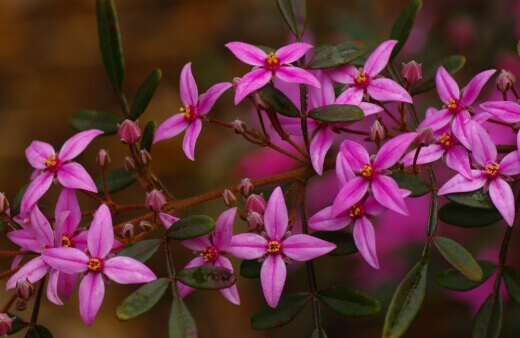
Fraser’s boronia is another bright and brilliant species, which does seem to offer gardeners a little bit of a challenge. While these plants are particularly hard to establish, they make up for it with the gorgeous, deep pink flowers.
Brown Boronia (Boronia megastigma) By far the most widely grown species of Boronia, the B. megastigma or brown boronia is a Western Australian native with beautifully perfumed flowers and foliage. As this plant can be a little tricky, many gardeners recommend growing yours in pots for the best results. For more tips, follow our Boronia megastigma Growing & Care Guide. |  |
Red Boronia (Boronia heterophylla) Another popular choice is the B. heterophylla or red boronia. Unlike the name suggests this southwestern native has gorgeous pink-tinged petals and robust, sweet-scented foliage. Perfect for those looking for a medium-sized shrub, this is a great choice for a fragrant, feature plant. |  Source: gardensonline.com.au |
Native Rose (Boronia serrulata) With slighter large flowers, the B. serrulata or native rose is perfect for regions like New South Wales. This species produces gorgeous deep pink flowers with a delicate rose-like fragrance. Enjoying well-draining soils, this species is great for rockeries and flower gardens. |  |
Aniseed Boronia (Boronia crenulata) Also known as the aniseed boronia, this is a dense shrub or small tree with highly ornamental flowers. While it will need to be protected in regions that experience a lot of hot sun, it’s perfectly happy to grow in a wide range of soils. |  |
Sydney Boronia (Boronia ledifolia) A particularly showy Boronia species, B. ledifolia or Sydney boronia is known for its compact growth and extreme production of blooms. While it needs a semi-shaded or sun-dappled spot to grow, it produces a wealth of flowers throughout the summer and autumn. |  |
Boronia pinnata Although not a sweet-smelling plant, this evergreen shrub is prized for its waxy, fragrant foliage. This species is known to be hardy and enjoys growing in well-draining soils. |  |
Keys Boronia (Boronia keysii) Also called the Keys Boronia, this is a sprawling species of the boronia. With rose-pink and white flowers and an open branching habit, it makes for a stunning feature plant in gardens. |  |
Mauve Boronia (Boronia denticulata) With lime green leaves and pretty pink flowers, this species is great for regions with moist soil and rainy regions. Although it’s a smaller plant, growing less than a metre in height, it does produce masses of flowers. |  Source: plantselect.com.au |
The Tall Boronia (Boronia molloyae) The tall boronia is perfect for coastal regions. This species reaches around 3 metres in height in the right conditions and produces aromatic pink-red flowers. Unfortunately, this species can be a little trickier to establish so the right conditions are essential. |  Source: gcln.org.au |
Telopea Valley Star (Boronia ‘Telopea Valley Star’) With softer coloured leaves, the Boronia ‘Telopea’ or ‘Telopea Valley Star’ is a smaller, gentler variety. This is a hybrid variety, best suited for areas that experience cooler climates. |  |
The Forest Rose (Boronia rosmarinifolia) Also called the forest rose, this species produces small, slim dark green leaves and pretty little pink flowers. Although not as popular as some of the other varieties, B. rosmarinifolia offers a gentler bloom when grown in sun-dappled situations. |  Source: ppnn.org.au |
Bremer Boronia (Boronia clavata) Turning away from the pink-tinged flowers, the B. clavata or Bremer boronia is perfect if you’re looking for a gloriously green plant with softer yellow notes. Used to growing near river banks, this graceful plant has an upright growing habit and is known to be more adaptable than most. |  Source: en.wikipedia.org |
Pale Pink Boronia (Boronia floribunda) Called the pale pink boronia, this species is another with softer coloured flowers. Contrasted against its dark foliage, this stunning cultivar is great for coastal regions perfect for coastal gardening. |  Source: en.wikipedia.org |
Fraser’s Boronia (Boronia fraseri) Fraser’s boronia is another bright and brilliant species , which does seem to offer gardeners a little bit of a challenge. While these plants are particularly hard to establish, they make up for it with the gorgeous, deep pink flowers. |  |
How to Grow Boronias
Another benefit of growing boronias is that these beautiful plants have relatively similar needs. As such, if you succeed in growing one variety, chances are you’ll be able to handle any of the others.
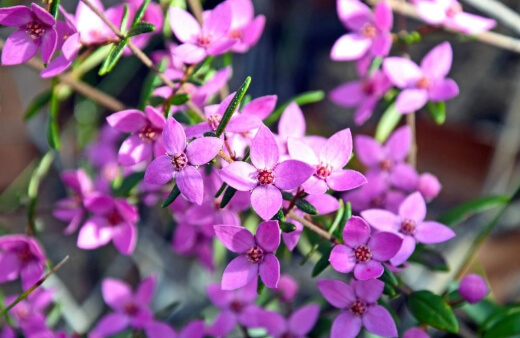
The most important part of growing your boronias will be to ensure that they are protected from extreme sunlight or frost. These plants need the right conditions to perform, so scorching or freezing them will result in less-than-happy plants.
Most varieties also prefer well-draining soil. As boronias have many tubers and rhizomes, these cannot be left sitting in moisture. For clay or moisture-rich soils, consider taking measures to improve soil drainage.
If you’re planning on planting boronias in a pot or raised bed, pick a soil enriched with plenty of organic material, compost or manure. If you make your own compost, speed up the process by checking our worm farm product reviews and buying guide.
Boronias also prefer to have their root systems kept cool, as such mulching around the base of your plant is recommended, especially during the summer.
How to Propagate Boronia

These plants are relatively easy to propagate, and this can be done in a variety of ways. If you’re new to growing boronias, buying an established plant to start is always a good idea.
You can propagate new plants from seed, leaf cuttings, stem cuttings or by means of division.
Propagating by Seed
You can purchase seeds and sow them during the spring. Fill a seedling tray with a rich seeding mix and sprinkle the seeds across the top of the soil.
Water well after sowing and provide sufficient humidity for germination. For the best results, consider covering your seedlings with a plastic cover.
How to Propagate by Cuttings
Both stem and leaf cuttings are viable ways to parent new plants. Be sure to choose a healthy plant that is free from pest or disease issues. For leaf cuttings, simply remove the leaf and make a clean, horizontal cut along the major veins of the leaf.
Then, place the leaf on a potting mix, making sure the cut edges make contact with the soil. Water well until the cut edge begins to develop.
For stem cuttings, remove a cutting around 10 to 15 cm in length. Dip into a rooting hormone and plant into a small pot, around 5 cm deep. Water well and keep in a warm, semi-shaded spot to root.
Propagating by Division
Rhizomes can be divided at the time of replanting. Divided plants can either be repotted or planted directly into the soil. Late winter and early spring are the best times to take cuttings.
After replanting divided plants, be sure to apply some native fertiliser every 2 weeks to support young plants.
Boronia Care Guide
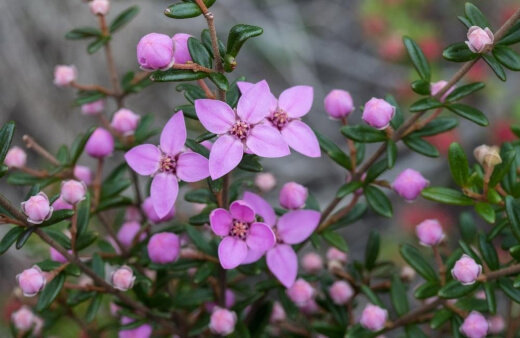
Once plants are established, their care becomes a lot easier. Maintaining the right level of moisture and sun will need to be your main focus here.
Follow these care tips for the best results:
Watering Boronia
Although over-watering should be avoided, these plants do enjoy a good level of moisture. It’s always best to regularly check your soil to see if they need water.
In very hot summers, you will need to increase your watering significantly. Your roots should never be left to dry out for too long.
Mulching
Mulching is a great way to protect your plant from harsh elements. Applying a good layer of mulch year-round is the perfect way to keep roots moist in summer and warm in winter.
A gravel mulch has been known to work best. Learn more types of mulches and how to use them in our complete mulch guide.
What Fertiliser to Use
Fertilising in spring and summer is recommended as it helps to promote new growth and improve the vibrance of the flowers. In warmer climates, you can even add some fertiliser during the dormant season.
During their growing period, they can be fertilised as often as every 3 weeks.
Pruning Boronia
Light pruning can be done to maintain shape and remove any spent flowers. When pruning, it is important to be gentle and not cut back too far into any old wood. Be sure to use a sharpened pair of shears to avoid any damage to the plant.
(See our review on the best secateurs available in Australia if you are in the market for one.)
Boronia Common Pests, Problems & Diseases
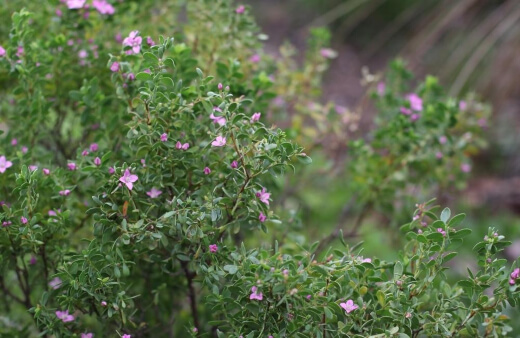
For most gardeners, these are trouble-free plants once you’ve been able to establish your plants. Of course, most garden plants are susceptible to common pest and disease issues these include:
- Aphids
- Caterpillars
- Snails
- Mildew
- Root Rot
For the most part, keeping a healthy plant is the best way to combat or prevent these issues. Only distressed boronia plants begin to develop issues.
For garden pests like aphids, caterpillars and snails neem oil or horticultural spray is the best choice for treatment. Regulate your watering as much as possible.
Should you notice your plants developing root rot issues, ensure you allow the soil to dry before watering again. Should the issue persist you may need to consider replanting.
Boronia Frequently Asked Questions
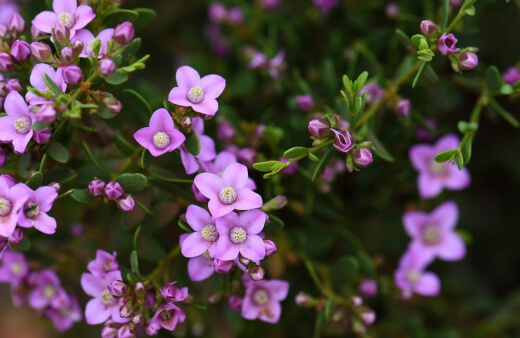
Are boronias hard to grow?
These are not the easiest plants to grow. However, they are tremendously rewarding when you do get them right. Be sure to pay special attention to the conditions when planting boronias to give yourself the best advantage.
Do boronias attract birds?
Due to the many wonderful blooms, boronias attract a wide range of nectar feeders including bees, butterflies and smaller bird species.
Can I transplant boronia?
Boronias are considered to have finer root systems which means they can be challenging to transplant. Most often, it is not advisable to move your plants once they are established.
However, should you have no choice, just take extreme care not to damage the root system.
What is boronia used for?
These gorgeous plants have a range of applications, with the most popular being in landscaping and the cut flower trade. However, their beautifully scented leaves are also often used in aromatherapy.

Infuse your Garden with the Delightful fragrance of Boronia
So, there you have it. Everything you need to know to grow a wealth of beautifully blooming boronias in your garden. Take care to ensure the right conditions before planting boronias which will ensure your plants thrive and provide you with the sensory spectacle you are hoping for.
Published on March 5, 2022 by Nathan Schwartz
Last Updated on September 19, 2025




